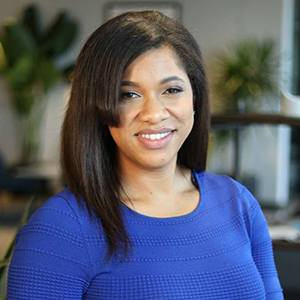Using Tech to Drive DEI
How technology tools paired with new ways of thinking can help companies create more diverse, equitable and inclusive workplaces.

This article originally appeared in the Spring 2021 issue of Middle Market Growth. Find it in the MMG archive.

Achieving diversity, equity and inclusion in the workplace requires more than memos and an updated employee handbook. Kanarys, a technology platform that takes a holistic approach to solving DEI challenges, is enabling companies to take immediate action toward systemic change. Middle Market Growth recently interviewed Star Carter, co-founder, chief operating officer and general counsel for Kanarys about the Dallas-based company’s platform and approach. The following is an edited and condensed version of that interview, which is available to view in full at acg.org/growthtv.
How does Kanarys help to advance diversity, equity and inclusion?
Kanarys takes a very data-based approach. We start with data analytics and we walk alongside our partners and go all the way through to providing initial insights, recommendations and then strategy implementation. That’s why we start with the data and analytics first, because it’s important to do those surgical interventions that are tailored specifically for your organization. There’s a reason why diversity and inclusion have been stagnant. People tend to implement the best practices, but we haven’t really seen enough improvement and progress with diversity and inclusion.
“We just have to remember that you can utilize technology to identify challenges, but at the end of the day, it is people that utilize those tools.”
Star Carter
Co-Founder, Chief Operating Officer and General Counsel, Kanarys
What role can technology play in achieving DEI goals?
We work with companies of all sizes, from the middle market all the way up to large enterprises. My favorite company segment to work with is the middle market, because these companies tend to be newer in the diversity and inclusion journey. Kanarys can really help them build that DEI strategy and foundation. What we see with the middle market is that often these companies don’t have substantial data around diversity, equity and inclusion, so technology can be used to collect and analyze that data and help them measure and track progress. It allows a company to see how it’s doing with its own DEI efforts and internal benchmarking over time, as well as external benchmarking and comparing itself to other companies. With our technology, these middle-market companies have the information that they need to get very specific about their interventions based on that data.
What types of data does Kanarys collect and analyze?
We’re looking at both employer-related data and employee-related data. With the employer data, we’re looking at the systems, policies and procedures that are in place. What do you do when you perform your hiring process? What’s your process for promotional advancement? Do you communicate this to your employees? What about when you are interviewing prospective employees? Are you disclosing pay bands? Are you asking them about their salary history? These are the kinds of data points we’re collecting. Once we understand that, then we have a sense of where our company partner is on their DEI journey from the employer side. This is important because a lot of times we see these biases creep specifically into the policies, the procedures and the systems that exist at a company.
We’re also gauging and assessing the perception of employees. According to research from Boston Consulting Group, 96-98% of companies above 1,000 employees have diversity programs, but 75% of the underrepresented employees feel like they do not personally benefit from them. We’re big believers that we want to understand the perception of the employee. You would be shocked how many companies have never asked employees questions around DEI.
What are the limitations of using technology to achieve DEI goals?
Technology is a tool that middle-market companies should definitely utilize, but who are the creators of that technology? They are people. When you have a group of technologists and engineers, a lot of times what you get is technology that doesn’t take into account diverse perspectives. Some of those biases creep into the technology, because all of us have unconscious biases.
One example is facial recognition. As a result of not having diverse creators, there were several times in which facial recognition did not work for Black and Brown individuals who were utilizing that technology. We have to diversify technology used in the AI and machine learning fields.
The second limitation that comes to mind is enabling, and the perception that technology itself is going to solve issues related to diversity and inclusion. We just have to remember that you can utilize technology to identify challenges, but at the end of the day, it is people that utilize those tools. You have to go beyond the tool.
Are there any dimensions of diversity that tend to get overlooked by companies as they embark on a DEI journey?
Given the recent #MeToo movement, and what I coin as the “racial pandemic” with George Floyd and beyond, there tends to be a focus on race and gender. But there are so many things that go into diversity. When we’re talking to our middle-market companies, we also want them to consider other demographics, like veteran status, and with respect to women—how many of the company’s employees are mothers? How many of them are responsible for elder care? You also have to consider different generations that approach work differently, and LGBTQ and religious minorities who are also factors of diversity.
As we talk to our current clients and to prospects, we recognize that diversity is extremely important, but historically, a lot of companies have only focused on the diversity side. They have to understand the importance of equity and inclusion, which are different.
When I’m talking about equity, I’m talking about fairness—are your policies and procedures fair across your entire workforce? In terms of inclusion, the belonging portion of it means making sure that folks feel like they’re empowered to not only be at the table, but to speak up for the things that are important. Spread your diversity demographics to beyond just race and gender but focus on the equity and inclusion part of DEI as well.


